This chapter was originally published by the Center for Strategic and International Studies (CSIS) and Rowman & Littlefield as part of the broader multi-author report, “Perspectives on Taiwan: Insights from the 2018 Taiwan-U.S. Policy Program” released in March 2019.
A few months ago, a Taiwanese business weekly’s cover story was all about the India opportunity. It included an anecdote about one businessman telling another that India might initially be a tougher place to do business than China, but it was nonetheless worthwhile and, crucially, would not be fatal over time. The idea of the India opportunity (and option) is also present in Taiwan’s New Southbound Policy (NSP), which seeks to expand links with countries across South and Southeast Asia.1 There have been previous Taiwanese efforts to look beyond this region. However, this time, there’s an emphasis on building economic and people-to-people ties, as well as a greater focus on India.
As Taipei looks to the south, there is opportunity for broader and deeper engagement, especially as India “acts east”—an approach that includes economic, technological, and cultural engagement with Taiwan (as well as quieter security cooperation). But any interactions will have to take place in the context of India’s relations with China. That country looms even larger for Delhi than it has in the past. India’s China relationship has elements of cooperation, competition, and, potentially, conflict, and, like many countries, India has attempted to engage, as well as compete with Beijing. It has stressed the need for the two countries to respect each other’s sensitivities. In India’s case, this has meant taking cognizance of Beijing’s Taiwan sensitivities, while declining for the last decade to reaffirm its earlier support for a One China policy explicitly—implicitly and occasionally explicitly linking it to a Chinese affirmation of a One India Policy, which is unlikely to be forthcoming.2 This delicate dance was evident in state-owned Air India’s decision to switch to using “Chinese Taipei,” but not go as far as Beijing’s demand to use “Taiwan, China.” Overall, though, India’s relationship with China imposes certain constraints on the way India-Taiwan relations can develop (particularly officially).3
This will require Taipei to think creatively. Beyond the under-the-radar political, defense, and intelligence links that India and Taiwan maintain, it will need to identify areas where interests are complementary or it can engage stakeholders, create constituencies, and increase its visibility beyond official circles in Delhi. To some degree, there have been steps taken under the NSP that fit these categories. But there are further opportunities on the table, some that fit under the NSP rubric and some that go beyond it. This piece looks at a few.
Economics
A major focus of the NSP is on increasing economic ties with the 18 targeted countries. Given the number of complementarities, this seems like a no-brainer for Delhi and Taipei—India needs investment and Taiwan is looking to diversify from its traditional targets of investment (particularly China). And over the last few years, investment has increased, with more Taiwanese companies also operating in India than the past (e.g., in the smartphone manufacturing sector). For the Indian government, these companies have helped—and could help further—increase manufacturing in India. (Delhi has highlighted Foxconn’s investment as a key indicator of its “Make in India” initiative having had an impact.) In certain sectors, Taiwanese firms are also bringing their Indian partners into global value chains. Moreover, Taiwan can add value in areas that India is prioritizing, for example, with its technology and techniques in the ICT, healthcare, agriculture, and food processing sectors, as well as offer opportunities for engagement at the state level. There is also a chance to cooperate in areas where India is concerned about over-dependence on China, such as the solar power sector.
Yet, there is more potential than there has been progress. For the last decade, other than one year, trade has been within the $4-6.5 billion range.4 And investment, direct and indirect (i.e., through third countries), only amounted to $1.5 billion last year.
To increase these numbers, Taiwan would like what one official called an “FTA-like agreement” or at least an updated bilateral investment promotion and protection agreement with India.5 Five years ago, there was some consideration of an economic cooperation agreement. Taiwan’s Chung-Hua Institute for Economic Research and India’s ICRIER studied what it would entail.6 But, over the last few years, for domestic reasons, India has put negotiations on free trade agreements and bilateral investment treaties into deep freeze. It’s worth keeping an eye out for a thaw on this front, given the potential for economic cooperation and the fact that Taipei might be open to including services (a sticking point with other partners and something that can make up for the fact that Indian goods exporters see limited opportunity in Taiwan). However, it is not worth just waiting for such agreements to materialize—especially since concerns about Chinese reaction might limit the extent of any agreement.
Taipei has made some efforts in this regard, building on pre-NSP initiatives. In 2017, the Taiwan External Trade Development Council (TAITRA) established an India Center in Taiwan.7 Last year, it opened its fourth office in India in New Delhi and hosted an expo there in May. These steps can help familiarize Taiwanese companies with the opportunities available in India, as well as assist them as they navigate what can be a complicated country in which to operate. It would also help if the Taiwan Chamber of Commerce facilitated greater dialogue between those companies already investing in India and those considering the option (to share lessons learned among other issues). Where possible given competition, Taiwanese companies should also compare notes with their American, Japanese, Singaporean, or South Korean counterparts, who have had more experience operating in the Indian market (perhaps even via trilateral dialogues facilitated by the respective business chambers). TAITRA should propose to open an office in Bengaluru or Hyderabad, given the potential for cooperation between the two tech sectors.
In addition to learning about the business climate in India and market opportunities, greater awareness about India more broadly (e.g., the political and socioeconomic environment), as well subnational variation, will help Taiwanese companies. Taiwan’s government, universities, and companies should consider creating visiting professorships and fellowships for Indian professors and analysts to work in Taiwan at universities (including professional schools) and think tanks.
Government and business developing and institutionalizing links will be critical in ensuring the success and sustainability of such efforts. India and Taiwan have an annual economic dialogue, and recently established an annual industrial collaboration summit, as well as agreements between two of their chambers of commerce, and their trade and investment promotion authorities.
The chambers of commerce should also consider an annual India-Taiwan CEO Forum, or at least regular exchanges between senior business executives. This will help Taiwanese businesses establish direct connections with their Indian counterparts. It could also facilitate cooperation between Indian and Taiwanese companies, not just in India, but potentially in third countries as well. Indian and Japanese companies, facilitated by their governments, are already doing this as they undertake connectivity projects in India’s neighborhood. Delhi needs partners in this regard domestically and in its extended neighborhood, and Taipei—particularly with its strength in the digital space—could bring something to the table.
Travel and Tourism
One sector that can help increase bilateral economic and people-to-people ties is tourism. Tourism from India to Taiwan has almost doubled since 2009, but it still only stands at about 35,000. In comparison, in 2016 there were five times the number of Indian departures to South Korea than Taiwan.8 There could be a number of reasons for the low number of Indian tourists traveling to Taiwan. For one, there is not much awareness of “brand Taiwan” in India, whether in terms of place, products, or the people. China Airlines has run advertising campaigns, but its tagline “Taiwan: Asia’s Best Kept Secret” seems to have remained true.
Taipei can learn from Delhi’s own Incredible India campaign, which has helped familiarize tourists around the world with different parts of India; it also targets niche audiences for, say, yoga or adventure travel.9 Taiwan should consider familiarizing Indian audiences with: the diversity available within a short distance (whether someone likes visiting museums or religious sites, is a foodie or adventure traveler, or loves shopping); the surprisingly—at least to this author—wide variety of vegetarian food available (important to a number of Indian tourists); and a lower cost of living than a number of other destinations like Singapore and Hong Kong (and the developed world more broadly). Taiwan should also consider offering discounts for visitors from NSP countries, for example, in entrance fees at museums—and making sure potential travelers are aware of such promotions. Improved tourism-related infrastructure (including the establishment of higher-end resorts) would also help increase the number of tourists from India.
Taipei also needs to create awareness among tourists and travel agencies about changes in its visa regime that make it easier for many Indians to travel there. For Indians, who require visas to most places (which often are time-consuming and expensive to get), how fast and easily one can get an entry permit can shape travel decisions. Taiwan now offers essentially visa-free entry (with prior online registration) for Indians who have valid visas for or permanent residency in countries like Japan and the United States. This should be promoted, and not only to those in India, but also to Indian passport holders who are permanent residents of other countries. However, with those Indians who aren’t eligible for visa-free entry, Taiwan will continue to fall short compared to destinations like Indonesia, Hong Kong, and Thailand that have visa-on-arrival or e-visa/ registration facilities for Indians. A visa-exemption program (allowing stays of 14 or 30 days) of the kind that Malaysian citizens enjoy would help. Taipei’s plan to establish a tourism promotion office in India—as it did in 2017 in Thailand—could also create greater awareness and encourage travel to Taiwan.10
Direct connectivity between India and Taiwan is limited, with only one flight from Delhi to Taipei, twice a week. Compare that to the multiple daily flights from, say, Jakarta to Taipei. The direct flight that does exist takes 6–7 hours, whereas the one-stop flights can take twice as long, if not more. Improving connectivity will require both governments to make an effort, as well as the commercial case to be made. But it is worth considering, given the widespread impact better connectivity could have—not just increasing tourism from one country to the other, but also facilitating travel for business, employment, and education.
Finally, Taipei should work with Delhi to encourage outbound tourism from Taiwan to India. This can also help build brand Taiwan.
Education, Employment, and Exchanges
Tourism, economic links, and people-to-people ties can also be positively affected by—and, in turn, affect—increased educational and employment ties, as well as exchanges between Indians and Taiwanese more broadly.
Over the last seven years, Taipei has established seven Taiwan Education Centers, which can be leveraged further under the NSP’s Talent Development Program.11 These TECs teach Mandarin, as well as Chinese culture and history. The Taiwanese ministry of education has been subsidizing teachers to participate in these programs in India.12 It should consider including time in Taiwan for students as part of the program. This will give them the immersion they need, but also help create a direct link. Moreover, there is a lot more scope for such language training both in India and Taiwan. Delhi, on its part, should encourage and facilitate such cooperation, including from a regulatory perspective (for example, making it easier for Taiwanese teachers to work in India). The government, private, and even non-profit sectors need more Mandarin speakers, and Taiwan could be part of the answer.
The education sector more broadly—where Taiwan has capacity and India needs capacity—offers opportunity. In 2017, there were 1,532 Indian students in Taiwan (though this is more than double the number in 2015). To put this number in perspective, there are more than a half-million Indians studying abroad.13
Taiwan’s expanded scholarship program, particularly for professional and vocational courses, could not only help increase this number; it would also sit with the Indian government’s Skill India program. Moreover, Taipei should consider working with its companies—particularly those that might be interested in doing business in/with India—to increase these scholarships, as well as create apprenticeships or internships for Indian students. (This is already being done for students from Southeast Asia.) Such efforts could be mutually beneficial, providing work experience for the students and giving the companies access to skilled individuals familiar with India.
A few other steps could make Taiwan an attractive destination for Indian students. The Taipei Economic and Cultural Center (TECC) in India office—and Taiwanese universities—need to make students aware of the opportunities available (and alleviate any concerns that English-language courses are not an option), including through roadshows. Moreover, Delhi and Taipei should work together to ensure that degrees and diplomas are recognized in the other country. In addition, although Taipei has made it easier for foreign students to apply for work permits, it might want to consider including employment permission with a student visa. The U.S. student visa, for example, comes with a one-to-three-year optional practical training option after graduation. This will help attract more students and give Taiwan access to the high-skilled workers that it needs.
There currently are only about 1,500 Indians working in Taiwan.14 But this is another potentially mutually beneficial space. There are more than 13 million Indian citizens abroad (not including the nearly 18 million persons of Indian origin).15 This is why negotiating labor market access has been a high priority for the Indian government and a sticking point in trade deals (e.g., the Regional Comprehensive Economic Partnership). And that access has been getting tougher in a number of countries where Indians have traditionally gone to work or study: Australia (to some extent), Britain, Singapore, and the United States. Here India and Taiwan have complementary interests: Taiwan needs skilled workers; India has them.
Finally, the two sides should strive to increase and institutionalize regular exchanges—among scholars, analysts, journalists, entrepreneurs, and civil society leaders—in different sectors. This will increase awareness of the other country, sharing of perspectives, and learning about opportunities for cooperation. Here the United States could play a role. Conferences and exchanges that include Indian and Taiwanese participants can facilitate greater people-to-people interaction. Moreover, the U.S. administration, which has tended to follow a South Asia or East Asia theme for its International Visitor Leadership Program (IVLP)-like programs, should consider an Indo-Pacific theme that can include participants from India and Taiwan.
-
Footnotes
- For details of the previous initiatives, see Bonnie S. Glaser et al., The New Southbound Policy: Deepening Taiwan’s Regional Integration (Lanham, MD: Rowman & Littlefield, 2018).
- Indrani Bagchi, “India declines to affirm ‘One China’ policy,” Times of India, December 17, 2010; Transcript of External Affairs Minister’s first formal interaction with the media, September 8, 2014.
- “MEA Defends Air India’s Decision to Change Taiwan’s Name on Its Website,” Press Trust of India, July 5, 2018.
- External Trade Statistics, Ministry of Finance, Taiwan, http://web02.mof.gov.tw/njswww/WebProxy.aspx?sys- =100&funid=defjsptgl
- “Taiwan seeks FTA-like bilateral agreement with India,” IANS, March 3, 2017, https://www.business-standard. com/article/news-ians/taiwan-seeks-fta-like-bilateral-agreement-with-india-117030300337_1.html; Ashok Tuteja, “India negotiating investment protection treaty with Taiwan,” Statesman, April 14, 2018, https://www. thestatesman.com/world/india-negotiating-investment-protection-treaty-taiwan-1502622348.html
- Kristy Hsu et al. eds., Enhancing Trade, Investment and Co-operation between India and Taiwan (Academic Foundation, 2013).
- “TAITRA launches India Center in Taipei,” Taiwan Today, April 28, 2017, https://taiwantoday.tw/news. php?unit=6&post=114618.
- “Market Research and Statistics (Indian Tourism Statistics),” Ministry of Tourism, Government of India, http:// tourism.gov.in/market-research-and-statistics.
- See “Incredible India!” at https://www.incredibleindia.org.
- Wendy Lee, “Taiwan tourism bureau to set up office in Thailand,” Taiwan News, April 20, 2017.
- In the Delhi area at Amity University, Jamia Millia Islamia, Jawaharlal Nehru University, and OP Jindal Global University; in Mumbai at the Indian Institute of Technology or IIT; in Chennai at IIT, and the SRM Institute of Science & Technology; and in Karnataka at Manipal University.
- Glaser et al., The New Southbound Policy: Deepening Taiwan’s Regional Integration, 45.
- “Taiwan-India Relations,” TECC, https://www.roc-taiwan.org/in_en/post/39.html.
- Kristy Hsu, “New Southbound Policy & Taiwan-India Economic Relations,” July 2018 Presentation at Observer Research Foundation in New Delhi.
- Population of Overseas Indians, MEA, India, December 2017, http://mea.gov.in/images/attach/NRIs-andPIOs_1.pdf.
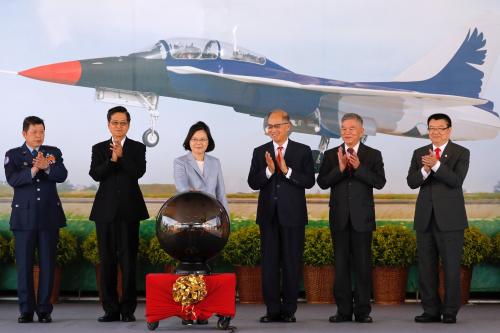
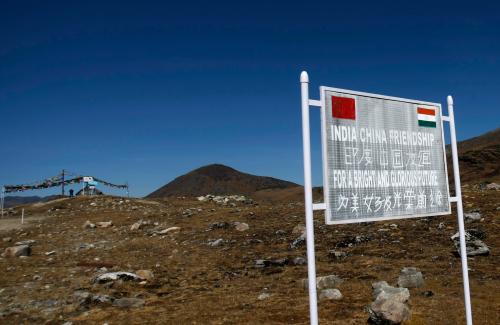
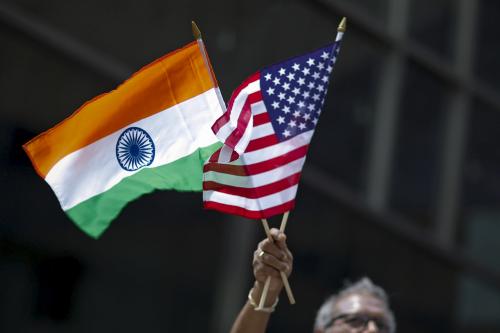
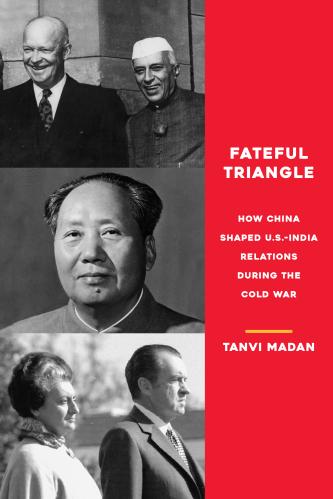
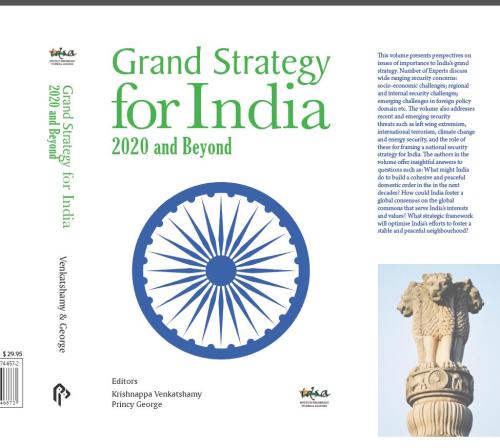
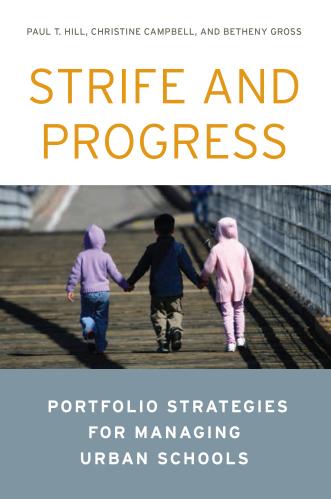

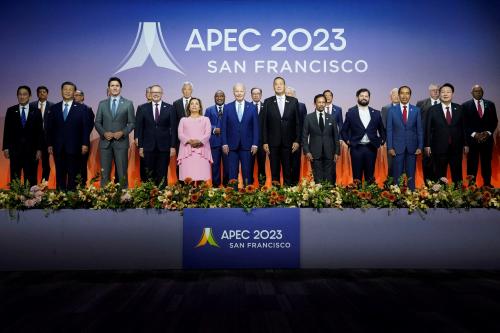
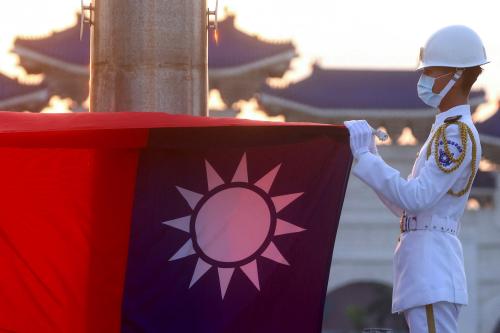

Commentary
The India opportunity for Taiwan
April 15, 2019